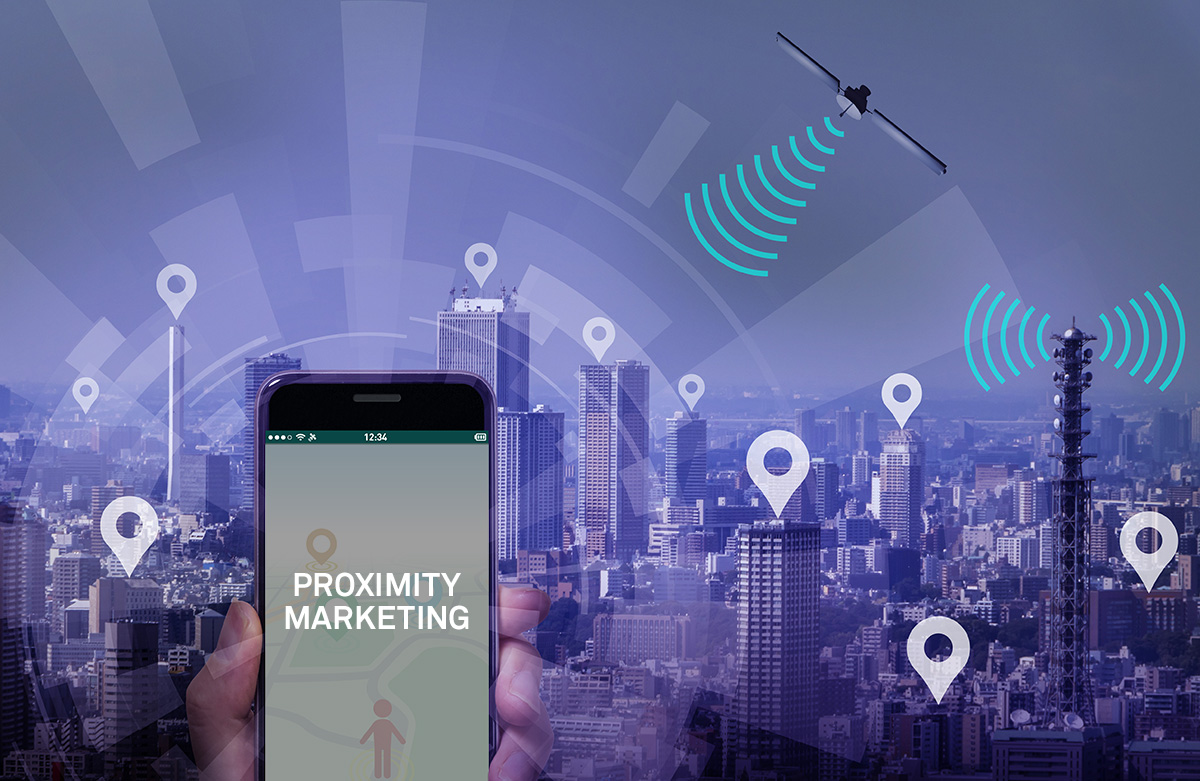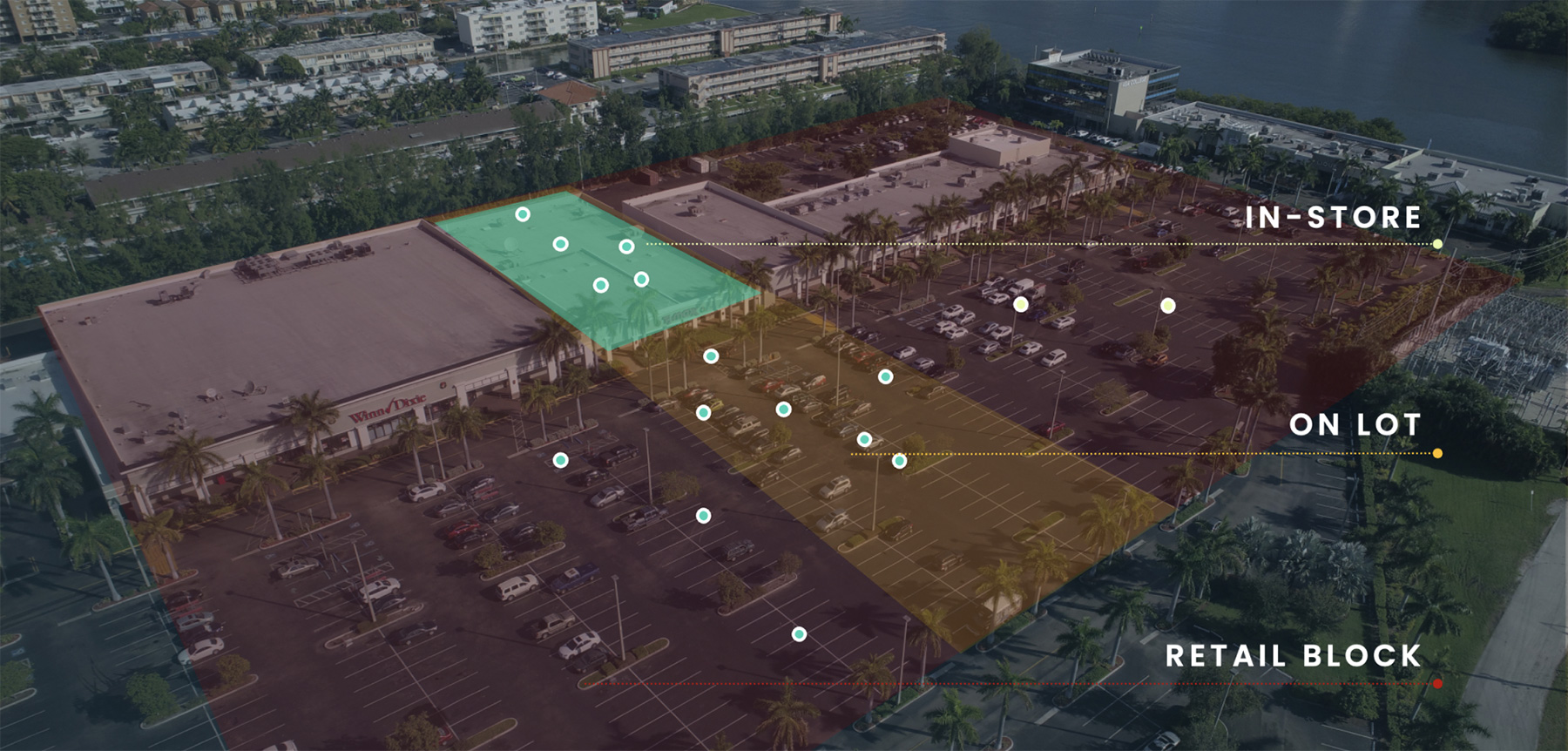5 Mobile Marketing Strategies & Tools for 2025
Discover the top mobile marketing strategies and tools that will help future-proof your brand for 2025. Learn how emerging technologies like AI and 5G are revolutionizing mobile advertising and foot traffic engagement. In 2025, if you’re not leveraging mobile marketing, you’re missing out on critical customer engagement opportunities. Learn how to stay ahead of the competition by adopting cutting-edge strategies.
Is your mobile marketing strategy ready for the future? Here’s why you need to be prepared.
The last few years have transformed how people interact with brands. As 5G and AI technologies rapidly expand, brands need to meet customers where they are — on their mobile devices, equipped with hyper-targeted, personalized ads.
The role of mobile is growing stronger every year. By 2025, mobile app usage and AI-driven recommendations will create even more targeted ad experiences, giving brands unprecedented opportunities to connect with customers.
In this in-depth guide, you’ll learn what mobile marketing is and discover some of the key mobile marketing tools and strategies you can use to drive foot traffic to your store.
What Is Mobile Marketing?
Mobile marketing involves advertising to consumers on their smartphones, tablets, and wearable devices. By 2025, these strategies will increasingly leverage AI and 5G to deliver hyper-personalized, data-driven ads.
Typically, mobile advertising strategies take advantage of mobile device features such as push notifications and location awareness to deliver more timely and relevant ads.
With over 7 billion mobile device users expected by 2025, mobile is now the dominant channel for advertising and brand engagement.
In addition, mobile devices — smartphones in particular — are now an essential part of the shopping experience. According to Gartner, in 2021 smartphone sales continue to increase. Studies also show that 79% of smartphone users have made a purchase online in 2022.
And it’s not just about purchases. Shoppers are using mobile devices for research before buying. In the retail space alone, mobile commerce sales — commercial transactions made via mobile phone — are expected to reach 10.4% by 2025, which is more than double the pre-pandemic numbers. In other words, there’s a great opportunity to reach potential customers with time-based, location-based, and personalized messages.
5 Mobile Marketing Strategies for 2025
As you plan your mobile marketing strategy for 2025, it’s important to adapt to emerging technologies and trends. From AI to geofencing, here are the top strategies to ensure your mobile ads stay relevant and effective.Some of the most important types of mobile marketing strategies include SMS marketing, social media marketing, location-based marketing, proximity marketing, and in-app marketing. Here’s how these mobile advertising strategies work.
1. SMS Marketing
SMS marketing, or text message marketing, remains a powerful tactic in 2025. Now, it’s enhanced by AI-driven personalization, allowing brands to deliver not only promotional messages but also predictive and behavior-based content.This is a permission-based mobile marketing strategy in which brands send promotions, deals, coupons and other alerts straight to potential customers’ phones via text messages of 160 characters or less.
One of the reasons SMS marketing is such a powerful mobile advertising strategy is because text messages have high deliverability, open and engagement rates. The stats show that:
- SMS open rates range from 90-99%
- 90% of SMS messages are opened within 3 minutes
- Click-through rates can be more than double that of email
That’s likely because most people have their phones with them most of the time, and because they get push notifications for incoming text messages, making those harder to ignore.
Since text messages are so short, many marketers include a link where recipients can get more product information, or a code that triggers a follow-up message. One best practice for SMS marketing is to avoid overusing it; this tactic is most effective for time-sensitive promotions.
2. Social Media Marketing
By 2025, social media marketing will be more important than ever as social platforms evolve with AI-based algorithms. TikTok, Instagram, and future social apps will offer even more opportunities for mobile-first, video-driven content. With all of those users in one place, it makes sense to use social media as one of your main mobile marketing strategies.
Social media makes it easy to create a personal connection with your customers via comments and messages. You can also increase brand awareness and boost your conversions with customer referrals and recommendations.
Though some companies choose to focus on organic social media posts, it’s increasingly common to use social media advertising to guarantee that you’ll reach the right customers. Some options include:
- Facebook ads, or boosted (promoted) posts
- Promoted tweets on Twitter
- Shoppable or promoted pins on Pinterest
- LinkedIn ads or promoted posts
Typically, this mobile marketing strategy lets you create an audience with demographic information, and set campaign goals, budgets and durations.
3. Location-Based Marketing (GPS)
In 2025, location-based marketing will evolve into AI-enhanced geotargeting, where brands can deliver even more contextually relevant ads using real-time data, combining location with user behavior and preferences. Sometimes location-based marketing is called geotargeting or geolocation marketing.
Research shows that the global location based advertising market, which was already valued at more than $62 billion USD back in 2019, is expected to grow at a rate of over 17% from 2022 to 2027. This type of marketing results in more engagement and a better response, because it is more relevant to where mobile users are and what they are doing.
For example, you can show a promotion for a restaurant to someone who’s in the area and encourage that person to visit the restaurant. Coach used location targeting to drive thousands of visits to its stores, so this is a proven way to increase foot traffic.

4. Proximity Marketing
Proximity marketing in 2025 will see innovations with 5G connectivity, allowing for even faster and more accurate ad delivery through Bluetooth and other near-field communication technologies.
One example of this is beacon marketing, which relies on physical Bluetooth-enabled devices in or near stores. These send short-range signals to mobile devices, which people see when they are near your location. This is another proven way to drive foot traffic. Toyota used proximity marketing to attract more customers likely to buy at local car dealerships.

5. In-app Marketing
By 2025, in-app marketing will extend beyond traditional social media platforms. Expect new app ecosystems powered by AI and 5G, offering brands an even larger canvas for mobile advertising.
Types of in-app advertising include:
- Display advertising like banners that appear at the top or bottom of a mobile screen
- Native advertising, which are promotions styled to mimic the app environment
- Video ads
- Interstitial ads, which appear in between app actions. For example, sometimes these ads appear when moving from one game level to another
Emerging Mobile Marketing Strategies for 2025
Looking ahead, there are several new strategies to consider for 2025:
- AI-Driven Personalization: Using artificial intelligence to tailor mobile ads in real time based on user behavior and preferences.
- 5G-Enabled AR and VR Ads: Leverage the speed of 5G to create interactive, immersive advertising experiences through augmented and virtual reality.
- Voice Search Optimization: Ensure your mobile content is optimized for voice search as more users rely on voice assistants.
5 Mobile Marketing Tools for Success
The five mobile marketing strategies above will get you started with targeting mobile device users. Now, we’ll tell you about the mobile marketing tools you’ll need to use these strategies effectively.
The 5 mobile marketing tools you’ll need include GroundTruth Ads Manager, geofencing advertising, weather targeting, audience targeting and brand insights.
1. GroundTruth Ads Manager
GroundTruth Ads Manager is a single platform that allows you to reach up to 120 million monthly visitors with mobile marketing. The technology is third-party verified and allows you to target potential customers based on the places they visit and the stores they shop in.
Customization options include distance, direction and click-to-call and you can use GroundTruth’s cost–per-visit model to ensure you only pay when someone actually visits your store. GroundTruth Ads Manager makes it easy to track progress with in-depth location analytics.

2. Geofencing Advertising
Geofencing advertising is another important form of mobile advertising which creates a virtual boundary around a location. For example, you can use this to identify a building or shopping area. GroundTruth uses its proprietary Blueprint technology to ensure that your geofence is accurate.
Once you create your geofence, you can show mobile ads to people who fall within the area and who meet your criteria. This approach combines GPS with audience insights to help you improve the efficacy of your mobile ad promotions. This is an accurate and highly scalable form of mobile advertising.

3. Weather Targeting
The weather affects consumer behavior. Sometimes people may choose to stay in or go out, and at other times it affects what they buy. Either way, you can use weather targeting to make your mobile marketing even more effective.
GroundTruth’s network of weather sensors is highly accurate, allowing you to target mobile advertising according to prevailing or expected weather conditions. You can serve ads depending on UV index, wind, temperature, and weather alerts. You can also combine weather targeting with other forms of location data to make your ads even more relevant and actionable.
4. Audience Targeting
Ever wondered how to leverage offline behavior to increase foot traffic? You can do this with audience targeting. This mobile marketing tool lets you reach customers based on factors like:
- Demographics
- Online and offline behavior
- Past and current behavior
- Interests
- Location
The result is that you can reach customers with mobile marketing at the time when they’re most likely to buy. For example, if a customer has visited your brick and mortar store, you can send them an offer based on their behavior in-store. Or you can send a message to someone who’s out and about based on how they interacted with your website.
And you can combine audience targeting with location marketing and geo-fencing to make your mobile marketing even more targeted and relevant to your potential customers.
5. Brand Insights
One of the best ways to increase foot traffic to your store is to understand what’s really happening with your visitors. GroundTruth’s brand insights tool provides location analytics and other insights including market share, foot traffic, brand affinity and more. This can help you really hone in on the right mobile marketing campaigns to attract your perfect audience.

Our Takeaway
The future of mobile marketing is here. With the rapid development of AI, 5G, and new technologies, the strategies and tools listed above will help your brand thrive in 2025, delivering the personalized, location-based experiences consumers expect.





